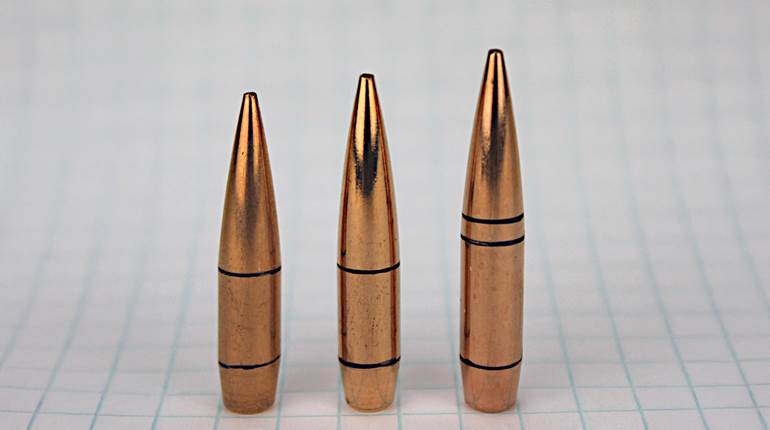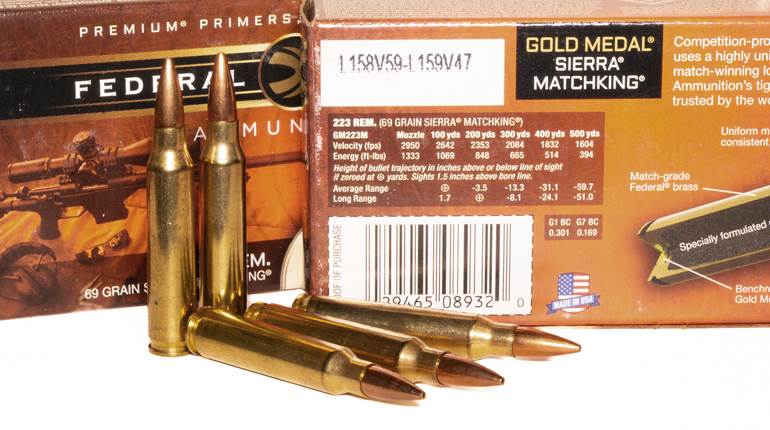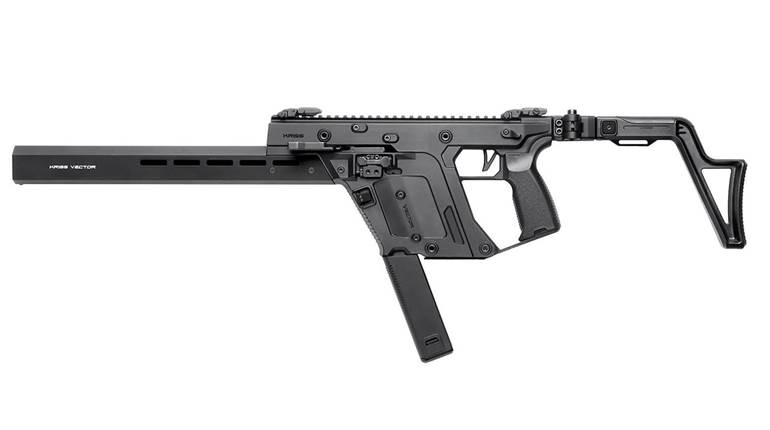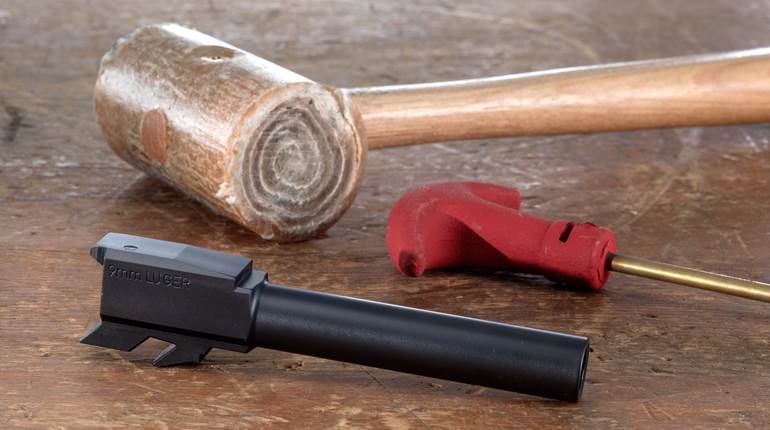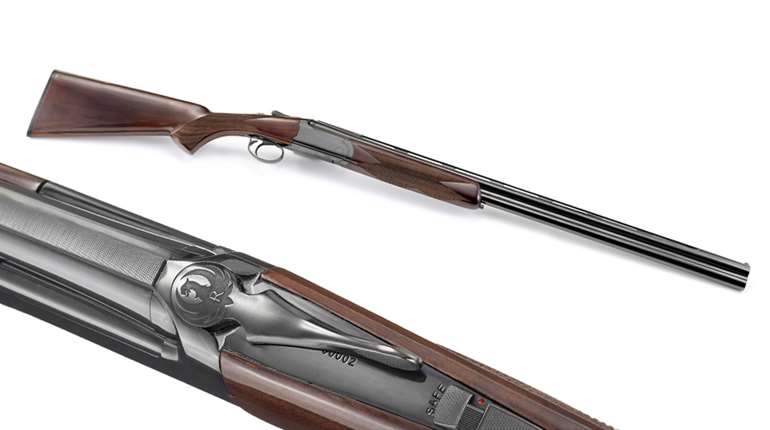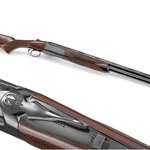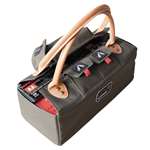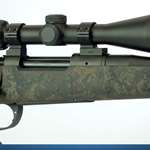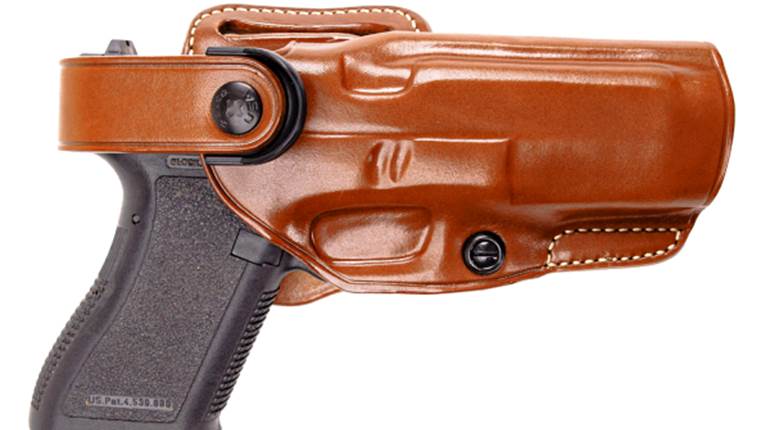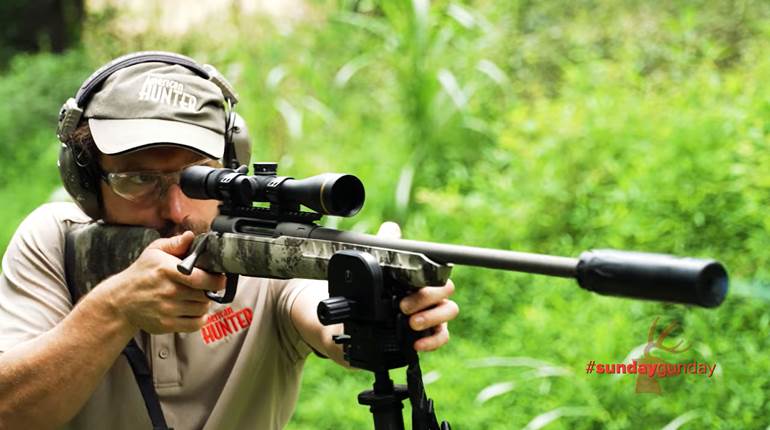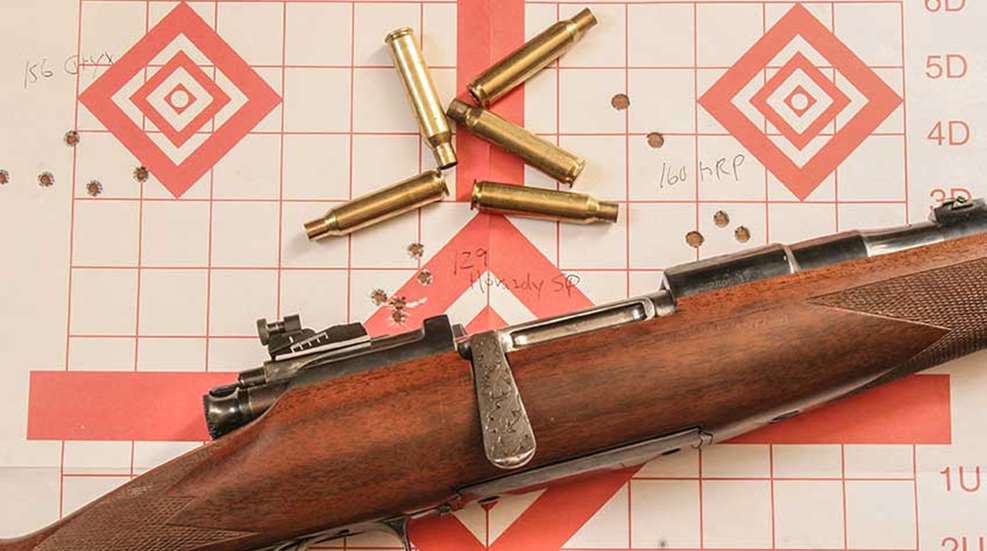
This handloading guide for the 6.5x54mm Mannlicher-Schoenauer appeared originally in the May 2015 issue of American Rifleman. To subscribe to the magazine, visit the NRA membership page here and select American Rifleman as your member magazine.
It’s hard for most 21st-century hunters to imagine, but during the early 20th century the 6.5x54mm Mannlicher-Schoenauer carbine was among the most highly regarded hunting rifles on the planet.
Among its famous fans were American scientist and explorer Roy Chapman Andrews, the supposed model for Indiana Jones; Arctic explorer Vilhjalmur Stefansson, whose expeditions often lasted years; Charles Sheldon, the American naturalist and writer who hunted from Mexico to Alaska; and professional elephant hunter W.D.M. “Karamojo” Bell, who preferred his light “.256” carbine to any other rifle until he found the ammunition unreliable.
But perhaps the most notorious use of the carbine was in Ernest Hemingway’s short story The Short Happy Life of Francis Macomber, where the wife of safari client Macomber kills her husband with “the 6.5 Mannlicher” while shooting at a charging Cape buffalo.
The Mannlicher-Schoenauer action was supposedly designed by Ferdinand Ritter von Mannlicher, though the naming may have been partly honorary, since it strongly resembles the action of the German Gewehr 1888 “Commission” rifle. But the removable rotary magazine was definitely designed by Otto Schoenauer.

The rifle and cartridge first appeared at the 1900 World’s Fair in Paris, where the Austrian company that became today’s Steyr Arms offered actions to gunsmiths. The first complete rifles, however, were ordered by the Greek military in 1903, including a carbine with a 17.7" barrel, and shortly thereafter Steyr offered sporting rifles and a full-stocked carbine. (In German, full-stocked rifles are called Stutzens, but English speakers usually call them Mannlichers, due to the 1903 carbine.)
In 1930, the Greek government placed its last order, the actions stamped “Mannlicher-Schoenauer 1930 System.” Sporting rifle production ceased in 1939 with the onset of World War II, and after the war Steyr (like other Austrian and German arms factories) was shut down, not reopening until 1950.
Stoeger had been the American importer and, shortly after the war, it imported some 1930 System Greek rifles and carbines and had them rebuilt into sporters. A few years ago I traded into what may be one of these, though the Stoeger name doesn’t appear anywhere on the barreled action. With a 19" barrel, it isn’t quite as light as the famed 1903 carbines, but still weighs only 6 lbs., 11 ozs., and is nicely made, including the oak-leaf engraving on the butterknife bolt handle.
Unlike many older carbines fired with corrosive-primer ammunition, the bore is pristine, with a rifling twist of 1:9" and a bore 0.256" in diameter with 0.264" grooves. Included in the trade were a set of RCBS dies and 150 Norma cases.

The rimless 6.5x54 mm Mannlicher-Schoenauer (abbr. M-S) case has a head diameter of 0.452"-0.453", and the rotary magazine is very case-specific, one reason few Greek rifles were rebarreled to other chamberings.
The most popular conversions were the 7x57 mm Mauser and the .257 Roberts, and the only other Mannlicher-Schoenauer I’ve owned was a Greek rifle rebarreled to .257 Roberts, with a cut-down military stock and a Lyman Alaskan scope in a Griffin & Howe side mount. It shot very well, and I sometimes regret selling it, but I have always suffered from a surfeit of .257s, if that’s possible.
The previous owner of my 6.5 carbine bought another cocking piece and had a gunsmith screw a Williams aperture sight on top, making the rifle more friendly to older eyes. He’d sighted it in with a handload using the 160-gr. Hornady Interlock round nose at around 2200 f.p.s., closely matching the original military load.
I used the same load when hunting that fall here in Montana. More hunting revealed the Hornady bullet to be erratic on impact, unlike most Hornady Interlocks. Sometimes it would break both shoulders of a deer and exit, and sometimes it wouldn’t reach the far ribs with a shot behind the shoulder.
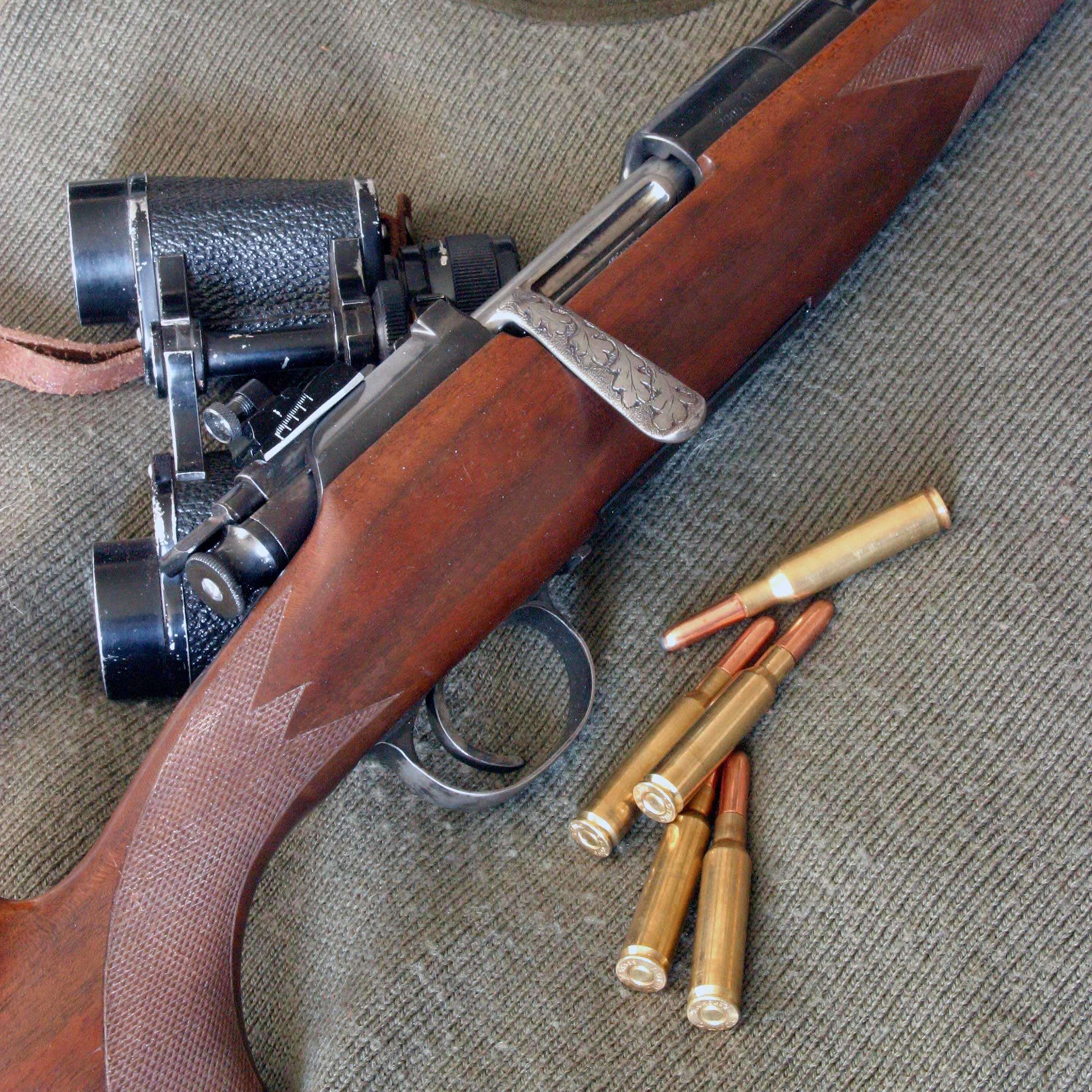
There isn’t much modern, pressure-tested 6.5x54 mm M-S data, but what exists covers bullets from 85 grs. to 160 grs. Like the rifles for most early smokeless military cartridges using long, round-nosed bullets, the chamber is generously dimensioned. Seating a 160-gr. Hornady backwards in a case revealed a throat slightly over 1/2" long, one reason many 6.5x54 mm M-S handloaders report better accuracy with heavier bullets.
In this particular rifle, however, the 85-gr. Sierra hollow point shot pretty well, but the 100-gr. Nosler Partition shot the worst of any bullet. Perhaps a faster-burning propellant would “bump” it up enough to shoot better, a trick that’s worked in other rifles. Both those light bullets were seated just deep enough to hold them firmly, but the others were seated to an overall length of 2.95", just enough for the rounds to fit in the magazine. The surprise star of the show was the 129-gr. Hornady Interlock, averaging about 1" groups with a muzzle velocity of almost 2500 f.p.s. That is plenty for most hunting with the 6.5x54 mm M-S.
I’d heard the 160-gr. Sierra round nose (also discontinued) expanded more reliably than the Hornady, and I managed to scrounge up a couple of boxes thanks to friends. The Varget charge listed is Sierra’s “accuracy” load for this bullet, and while it did shoot well, the shots were strung vertically, indicating some tweaking of the powder might tighten groups.
Personally, however, for game larger than deer I would use the 140-gr. Nosler Partition or 156-gr. Norma Oryx, a bonded bullet, since I’ve used both with fine results from other smaller-capacity 6.5 mm cartridges. The only problem with the 156-gr. Oryx in the Mannlicher-Schoenauer rifle was due to its small, flat tip. The edge of the flat usually hung up on the edge of the chamber, but filing the edge of the flat solved the problem. All other loads fed fine from the rotary magazine.
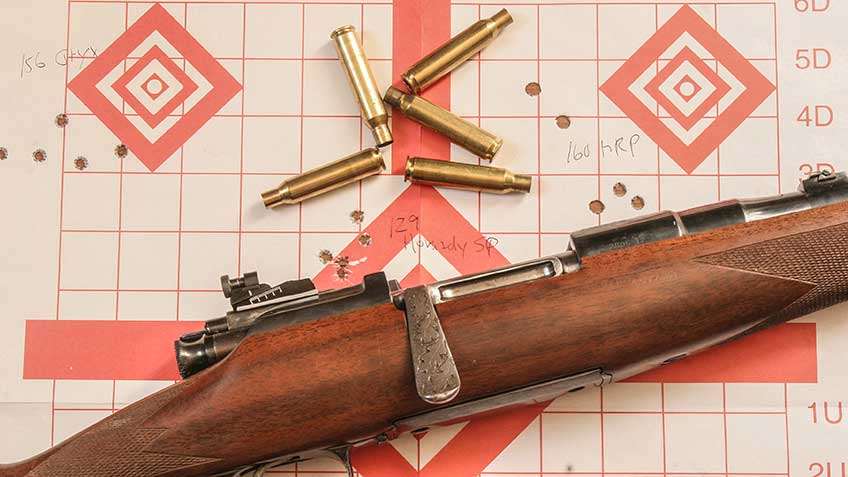
Other handloaders have reported groove diameters from 0.266" to 0.269" in older rifles, though bores have always been 0.256". Some of that might be due to erosion caused by corrosive-primer ammunition, but an educated guess would be the extra groove depth was due to the same reason the grooves in the original Gewehr 98 8x57 mm Mauser rifles were deepened to 0.321" from the original 0.318": The cupro-nickel jackets used on many early bullets resulted in so much bore fouling that some barrels split or burst.
I’ve found many rifles with “too deep” grooves will shoot smaller-diameter bullets well, as long as the bore diameter is correct, including several .303 British rifles that group some .308" bullets accurately. But if an older 6.5x54 mm M-S doesn’t like modern 6.5 mm bullets, Hornady still lists a 160-gr., .267" bullet for the 6.5x52 mm, though like the 0.264" 160-gr. projectile, production has been temporarily suspended to produce higher-demand bullets. Another solution would be to paper-patch .264" bullets, which Ray Ordorica reported worked well in an article for the 1996 Gun Digest.
Ordorica also reported many American 6.5x54 mm M-S dies sized cases too short for Mannlicher-Schoenauer rifles, by about 0.018". Some other handloaders have suggested this may have been some mix-up with 6.5x52 mm dies, since that chambering is essentially the same cartridge but about 0.018" shorter. Or maybe older dies were made to be adjustable for loading both rounds. The RCBS dies sized brass perfectly for my rifle when just contacting the shell-holder.
No American company makes factory ammunition for the 6.5x54 mm Mannlicher-Schoenauer anymore, but, with handloads, a classic carbine still makes for a fine hunting rifle.
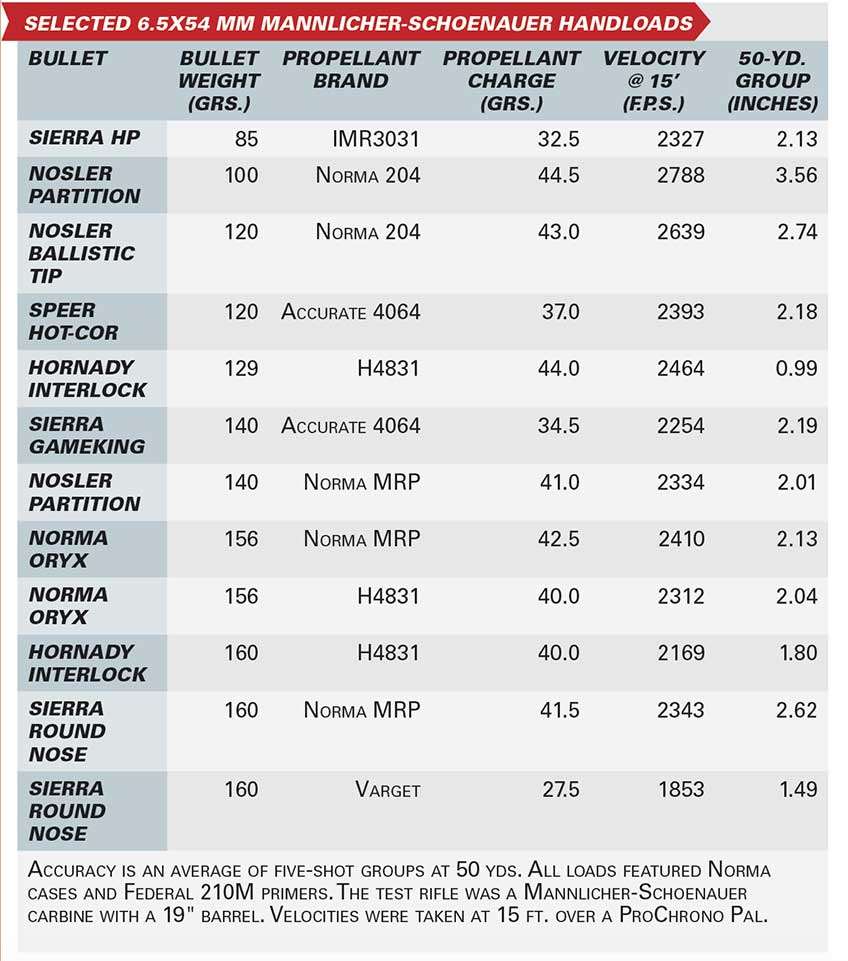
WARNING: Technical data and information contained herein are intended to provide information based upon the limited experience of individuals under specific conditions and circumstances. They do not detail the comprehensive training, procedures, techniques and safety precautions that are absolutely necessary to properly carry on similar activity. READ THE NOTICE AND DISCLAIMER ON THE CONTENTS PAGE OF THIS MAGAZINE. ALWAYS CONSULT COMPREHENSIVE REFERENCE MANUALS AND BULLETINS OF PROPER TRAINING REQUIREMENTS, PROCEDURES, TECHNIQUES AND SAFETY PRECAUTIONS BEFORE ATTEMPTING ANY SIMILAR ACTIVITIES.












